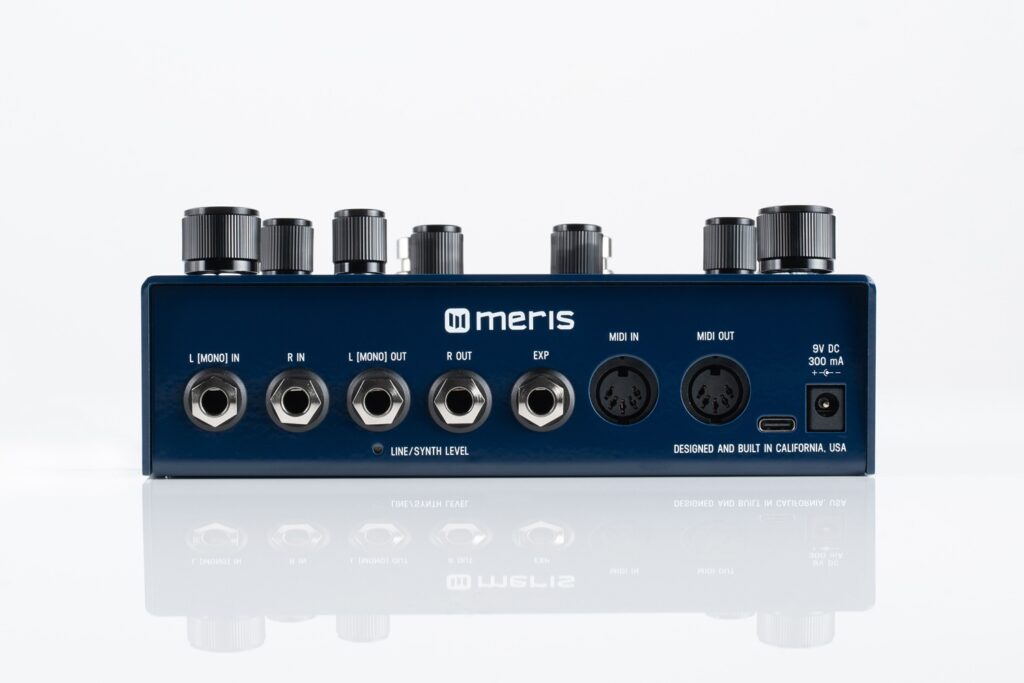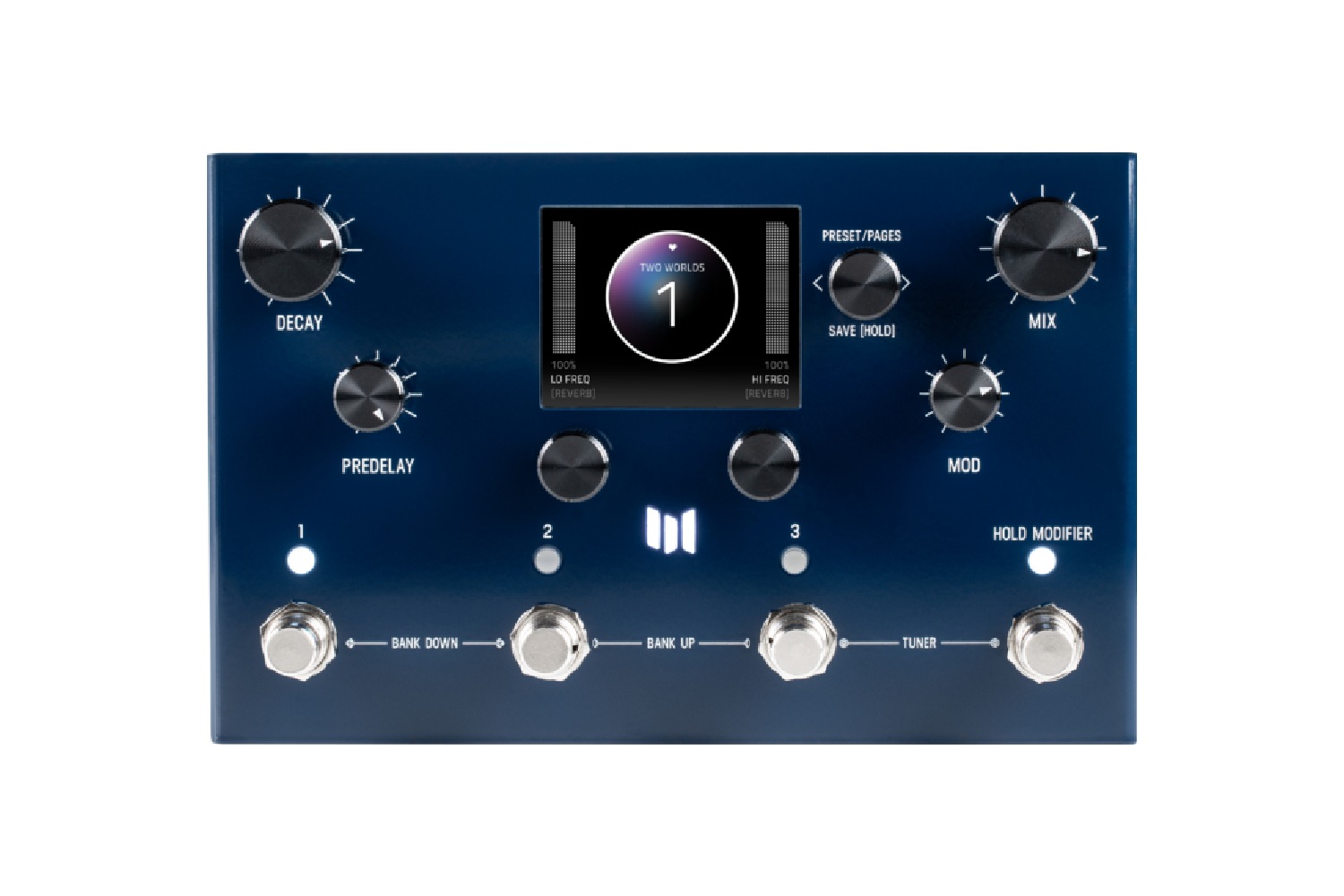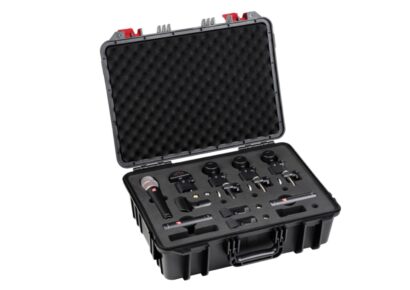Meris Mercury X | Studio Connections | RRP: $999
There are very few pedal companies that have explored the realms of time based effects like Meris have. The Californian pedal wizards and self-confessed sci-fi geeks have taken reverb into vastly unexplored territories or perhaps a more apt description being they “boldly go where no one has gone before.”
Having built Mercury 7 in both pedal and 500-series rack form factors, Meris proved their pedigree as both pedal and pro audio equipment masters, with their gear being lapped up by both the guitar and pro audio communities. According to Meris though, things are just getting started in their exploration of reverb, with their latest flagship pedal Mercury X designed to take us much, much further down the rabbit hole of reverberation exploration and needless to say, I was excited for the journey.
Read more gear reviews here.
Mercury X can’t really be looked at as just a guitar pedal, but rather a modular reverb system with pro audio/studio heritage and usage in mind, with an incredibly advanced ARM processor at its core. Expanding on from the heart of what made Mercury 7 so special, Mercury X blasts into the stratosphere with 8 distinct reverb algorithms (or reverb structures as the folks at Meris refer to them), with the popular Ultraplate and Cathedra taken straight from of Mercury 7. Three reverb structures have also been extracted from the wildly popular CXM 1978 reverb pedal (a collaboration between pedal maestros Chase Bliss and Meris) and dropped into Mercury X which include the 78 Room (hifi), 78 Plate (hifi) and 78 Hall (hifi). The three brand new reverb structures rounding out Mercury X include Spring – Meris’ unique take on the classic Spring reverb, Prism – a dual tank structure allowing for the creation of wildly augmented and modulating reverbs and lastly Gravity – which breaks down the reverb structure into individual grains for creating glorious pad like sounds – a splitting of the sonic atom. Aside from the reverb structures themselves, there are various preamp types, pitch types and filter types as well as a sophisticated gate section (yep gated reverb for days) to choose from for incredibly detailed sculpting of sounds within Mercury X.
Each reverb structure is uniquely configurable with seemingly endless tweak-ability of parameters that go far beyond what’s readily available in most other reverb pedals in 2023. The four foot switches at the bottom of Mercury X are pretty straight forward and self explanatory – with buttons 1-3 engaging and bypassing the 99 available presets, split over 33 banks that are incredibly simple to navigate. Pressing foot switches three and four together engages the built-in tuner – effectively eliminates the need for a dedicated tuner pedal – hurray! The three LED buttons located above foot switches 1-3 replicate the behaviour of the switches – which is a nice touch for those not using Mercury X on the floor but perhaps in the studio or on a desktop.
The fourth foot switch engages and bypasses the Hold Modifier – an incredibly flexible feature of Mercury X for some seriously creative on the fly control. The modifier can function in multiple ways, accessing and engaging parts of Mercury X such as freeze mode (saying goodbye to another pedal), latching or momentary behaviour as well as control over tap tempo or reverb structure parameters such as pitch control. This paired with an expression pedal takes parameter control to otherworldly heights, the likes of which I’ve never seen on a single pedal before.
Two distinct displays are available on Mercury X being a more tradition text display, which conveniently shows adjustable parameters in the four corners of the screen for quick visual cues, or the more unique bubble display allows for scrolling through sections of chosen parameters on screen – which almost looks like a diving through a molecular structure, which I’m really into. Connectivity of the Mercury X is plentiful, with true stereo separate input and output ¼” jacks with selectable line and synth level. An expression pedal can be connected via a dedicated 1/4” jack also, as well as MIDI In/Out on 5-pin DIN. The USB-C port is for firmware updates only and only drawing a modest 300mA of power Mercury X is easily powered by a 9VDC centre-negative PSU.

The seven knobs on Mercury X are each dedicated to specific tasks, making navigating parameters, scrolling through menus or on the fly changes to presets fast and intuitive. Whilst the Decay and Mix knobs are self explanatory, and the C1, C2 and C3 control knobs each respectively corresponding to parameters displayed on screen, the Predelay and Mod knobs are a bit more interesting.
With a total of 2.54 seconds of pre delay available on Mercury X, plus selectable subdivisions per side (it’s stereo), the Predelay section actually becomes a very sophisticated stereo delay all of its own. This goes further with the Mod knob working in conjunction with this element, adjusting the modulation depth for the Predelay of a particular reverb type. These two knobs expand even further when any of the new modulation Processing Elements are used in a preset. Effects such as 79 Chorus, Vibrato, Vowel Mod, Tremolo, Hazy Lo-Fi plus others take the possibilities of Mercury X’s overall sounds into completely new territory, but not (I’ll say it) in a boring multi-effects kind of way, this functionality is far more interactive and modular in its workflow – with each effect and selected parameter adjustable to uniquely affect another – creating super wide stereo modulated reverbs with augmented delay lines jumping throughout cavernous spaces child’s play. In other words, a sound designer’s utopia.
What I particularly enjoyed about Mercury X is the ability to build a breathtaking and otherworldly reverb patch in seemingly record time, and what would normally require a handful of additional pedals or plugins (with some written automation no less) is easily handled with Mercury X. The interactivity of the available parameters within each reverb structure is genius and I felt this had been meticulously considered by the designers. The range of sounds available from subtle rooms, squishy spring reverb tanks right through to completely inter-dimensional sci-fi delight is nothing short of inspired, which makes this masterful pedal suitable to such a wide ranges of users. Guitarists, engineers, producers, sound designers, the list goes on. And it’s that gift giving time of year, just saying…
For local enquiries, visit Studio Connections.

